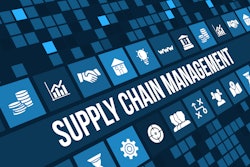
Doing business on a global stage requires more than just smart sourcing and manufacturing — it demands foresight, agility, and resilience built into your product design from the beginning. Decisions made during the design phase influence everything that follows.
Should you onshore, nearshore, or offshore? Should you design-in next-gen technology or stick with the tried and true? Should you buy critical materials and components from one supplier or three? In a world increasingly shaped by volatility and disruption, asking such questions early on can save a tremendous amount of time, money, and headaches down the line.
Supply chain risk: A constant on the global stage
Supply chain disruption isn’t a question of if, it’s when. At some point, you’re going to be dealing with compromised shipping, labor unrest, a factory fire, geopolitical upheaval, or some other agent of chaos. Experience may be the best teacher, but it’s no substitute for forethought. The more thorough you are about supply chain risk planning before production starts, the less likely you are to be dealing with insurmountable challenges later on. Strategic planning in the design phase dramatically lowers the odds of costly redesigns, missed delivery windows, and broken customer promises.
Considerations, consequences, and courses of action
Let’s begin at the beginning: the design phase. Roughly 70% of the total cost of a product is determined up front. Decisions made during this crucial period lock in everything from materials, components, and suppliers to tooling and tolerances. Beyond functionality, cost, and availability, it stands to reason that design engineers should look at their options through a supply chain lens, too. If preferred Option A is suddenly unavailable, what’s Option B? And Option C?
To build resilience into your supply chain from the outset, there are six questions every product development team should be asking:
1. Is your bill of materials (BOM) dual-sourced?
The answer should always be “yes.” Over-reliance on a single anything can end up being exhausting, expensive, or even catastrophic when reliable delivery is interrupted. Building flexibility into the BOM with approved alternates for materials, parts, and assemblies reduces the time it takes to source substitutes when access to a preferred supplier is compromised.
2. Is functionality tied to specific materials or components?
Even if critical materials and components are available now, that doesn’t mean they’ll be easy to get your hands on later. Buffer inventory and regional fulfillment hubs safeguard against shortfalls and supply chain disruptions. If your product is designed for long-term use, repairability and spare parts accessibility should be part of the equation, too. Weigh functionality vs. feasibility will also need to be considered.
3. What is the lead time on extended-build components?
Understanding supply and demand cycles can go a long way in streamlining the flow of materials, and so can avoiding hard-to-source components altogether. If a component will take months to get, how does that affect your ability to scale or pivot?
4. Are obsolescence or end-of-life (EOL) looming?
Relying on components near EOL can lead to redesigns, inflated costs, and grey market risks. Stay aligned with manufacturers’ roadmaps and phase-out timelines. The goal: no surprises.
5. Have suppliers been vetted beyond cost and specs?
Go beyond a technical appraisal of products and services. Financial stability, environmental concerns, and geopolitical risk factors should be put under the microscope, too. What affects them affects you.
6. What risks could shipping and freight pose?
Maintaining a predictable flow of materials and finished goods requires the ability to anticipate, adapt to, and recover from supply chain disruptions. Design decisions should support diversification — ports, carriers, and transportation modes — to mitigate disturbances, minimize delays, and optimize routes for lower freight costs. Furthermore, don’t just think outside the box — think about the box. Give serious consideration to dimension, weight, and regional import restrictions. All of these factors affect cost.
Design for supply chain resilience
A “what happens if…” mindset is powerful, but it can be paralyzing. Engaging an experienced partner before production begins is a risk mitigation strategy in and of itself. It’s also a competitive advantage. The right supply chain partner can bring critical insight into material choices, supplier diversification, and inventory strategies that prepare you for the unknown and help you balance the profitable, proactive, and pragmatic.
Every manufacturing engagement should start with a design-centric supply chain review. Is it optimized for production and distribution? Is it adaptable in the face of supply chain disruptions? Companies should assess resilience, manufacturability, and distribution feasibility before production begins, because it’s far better (and easier) to prevent disruption than to scramble to contain it.


















